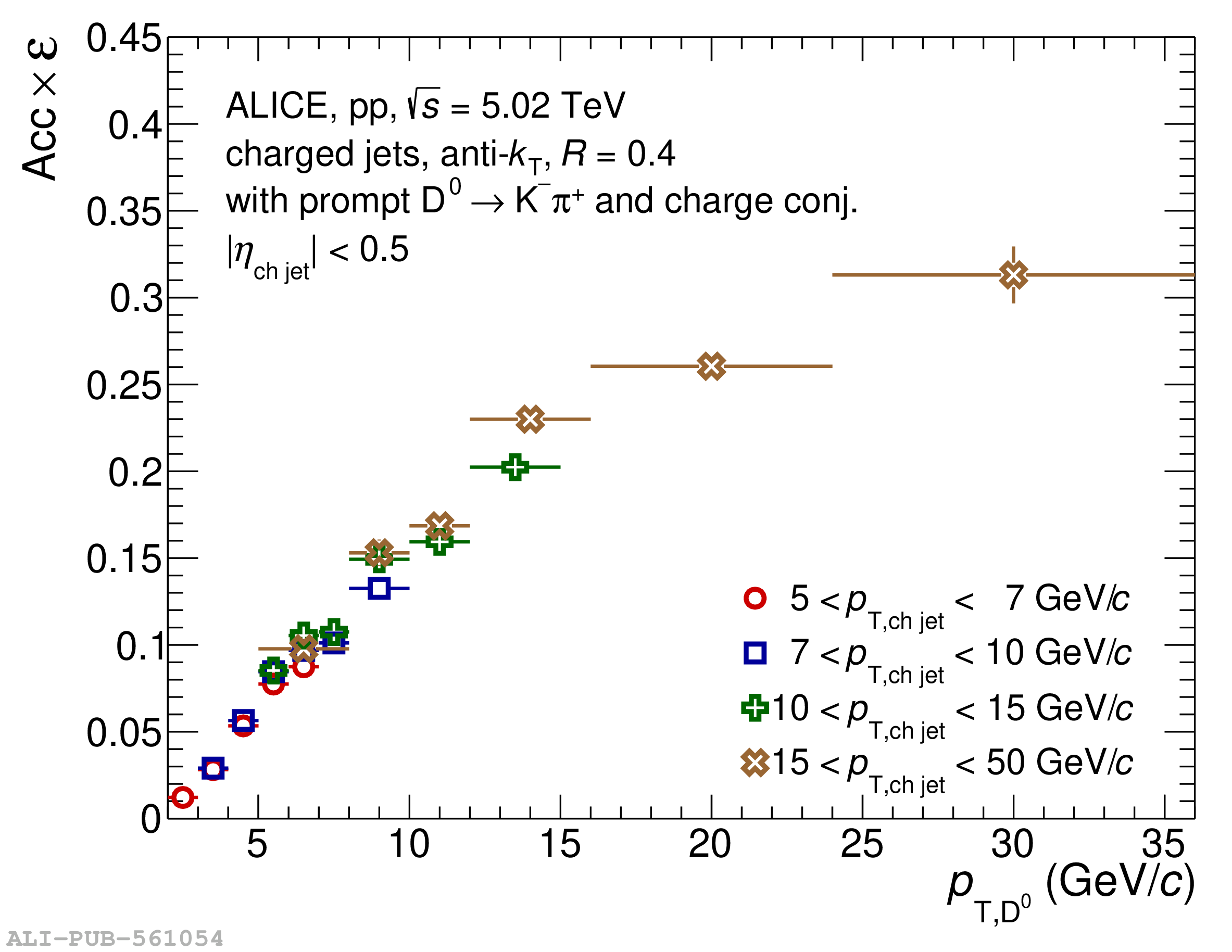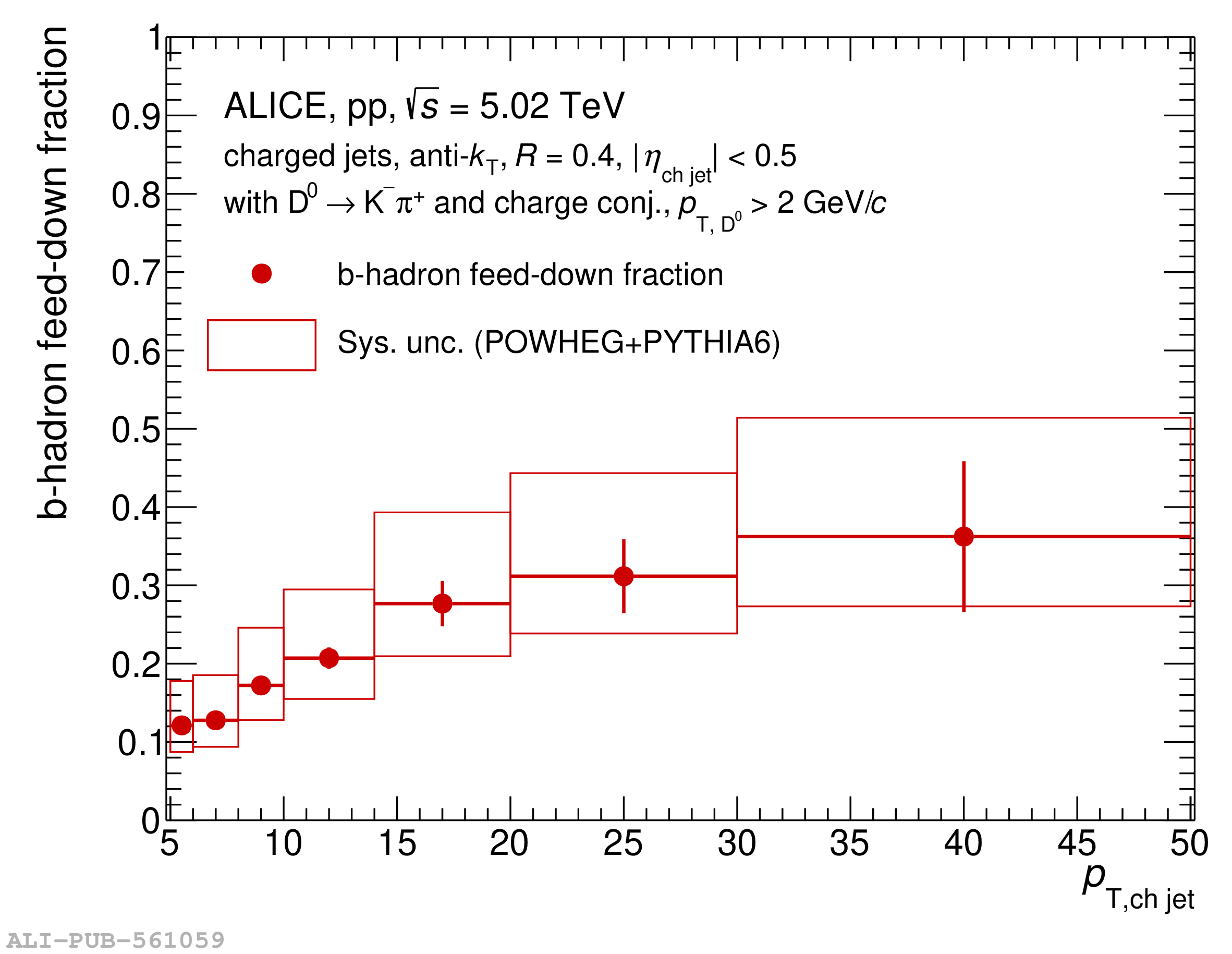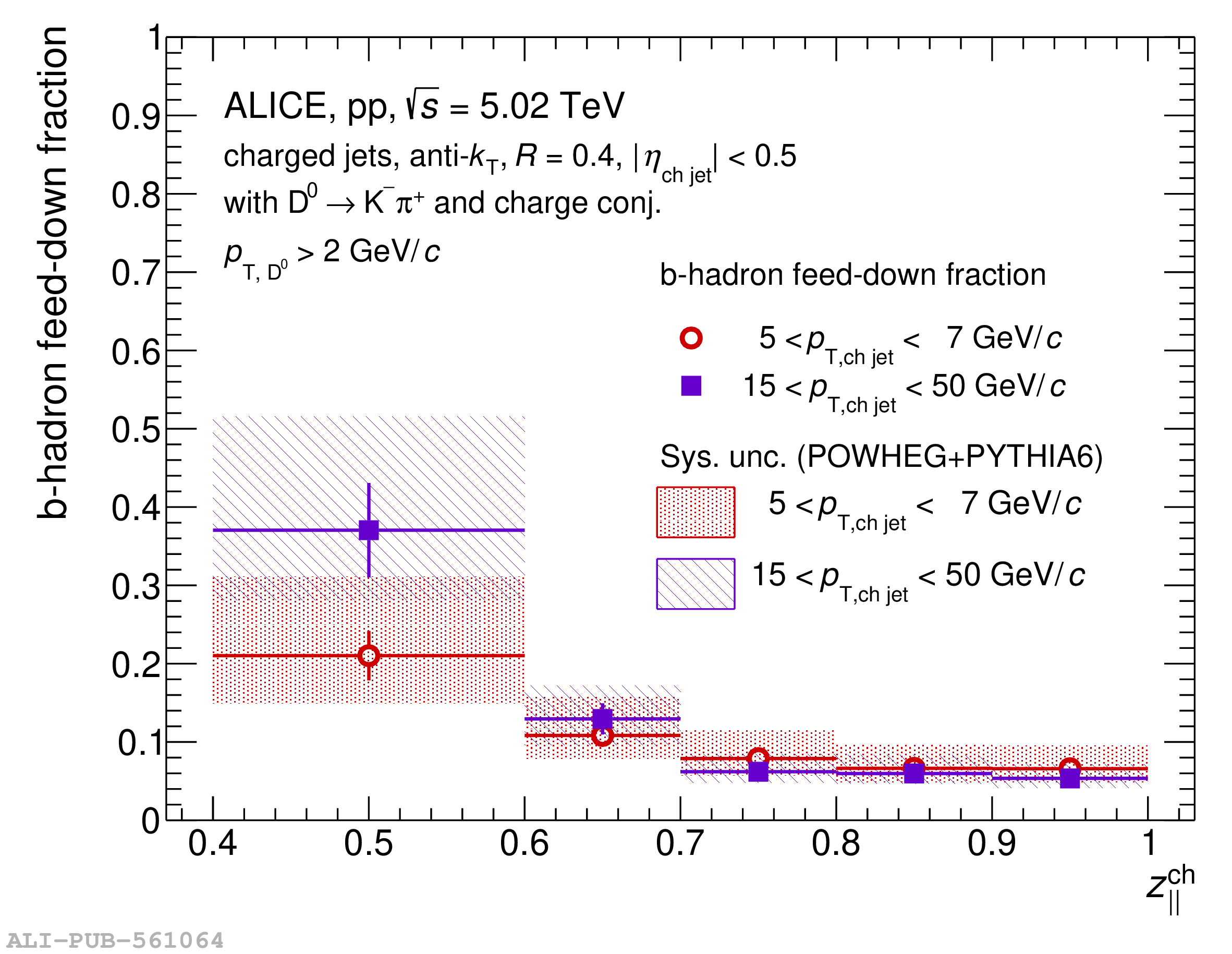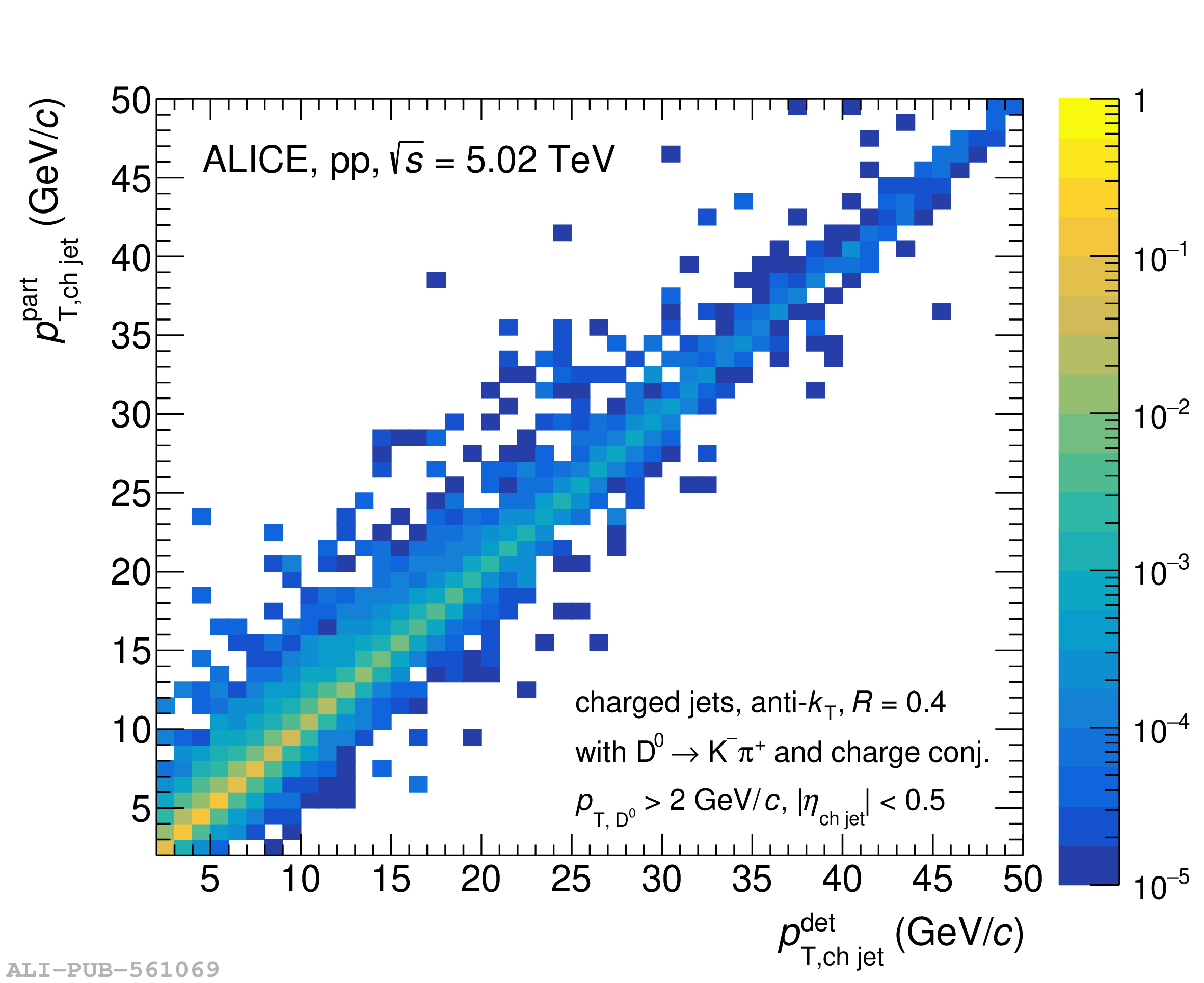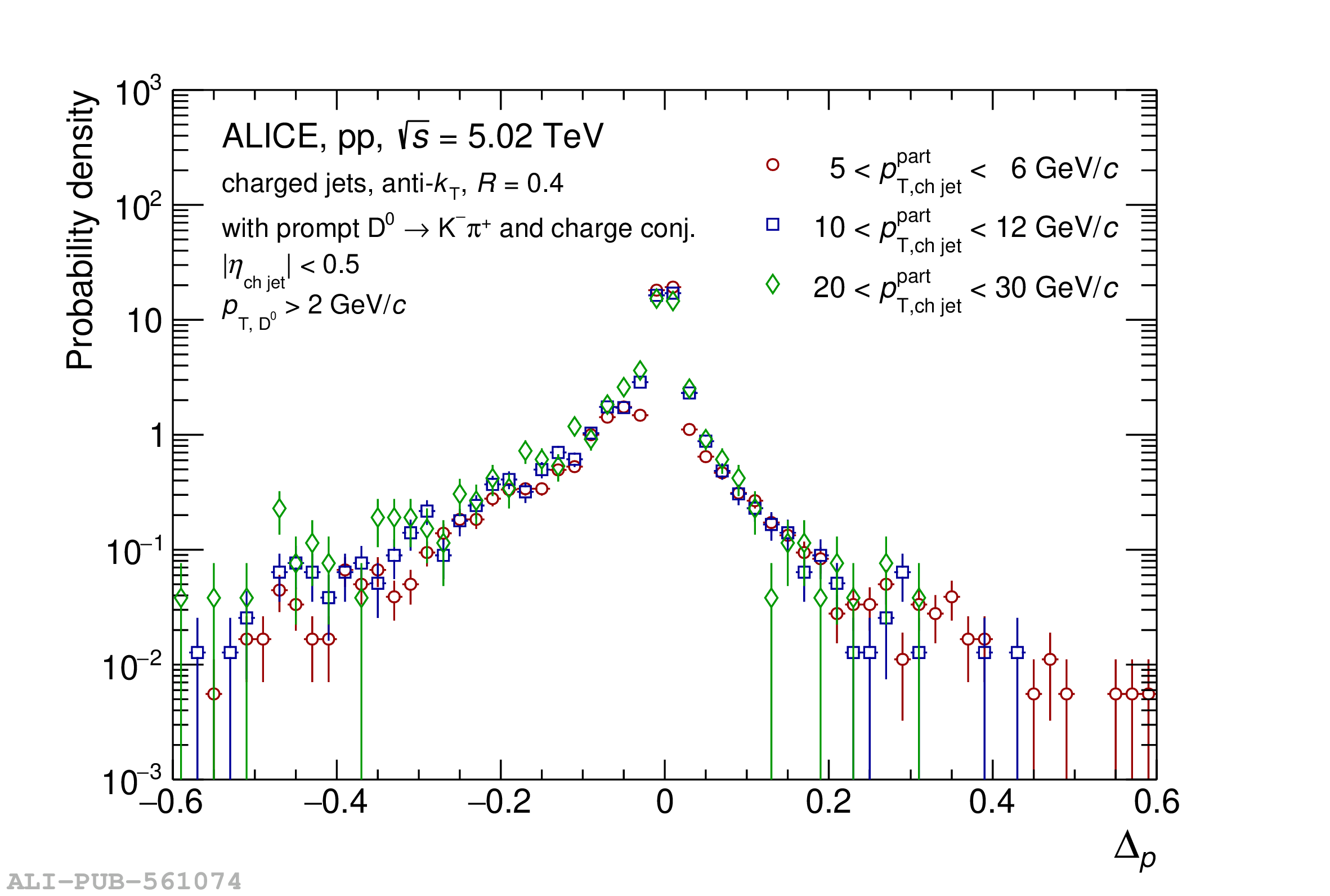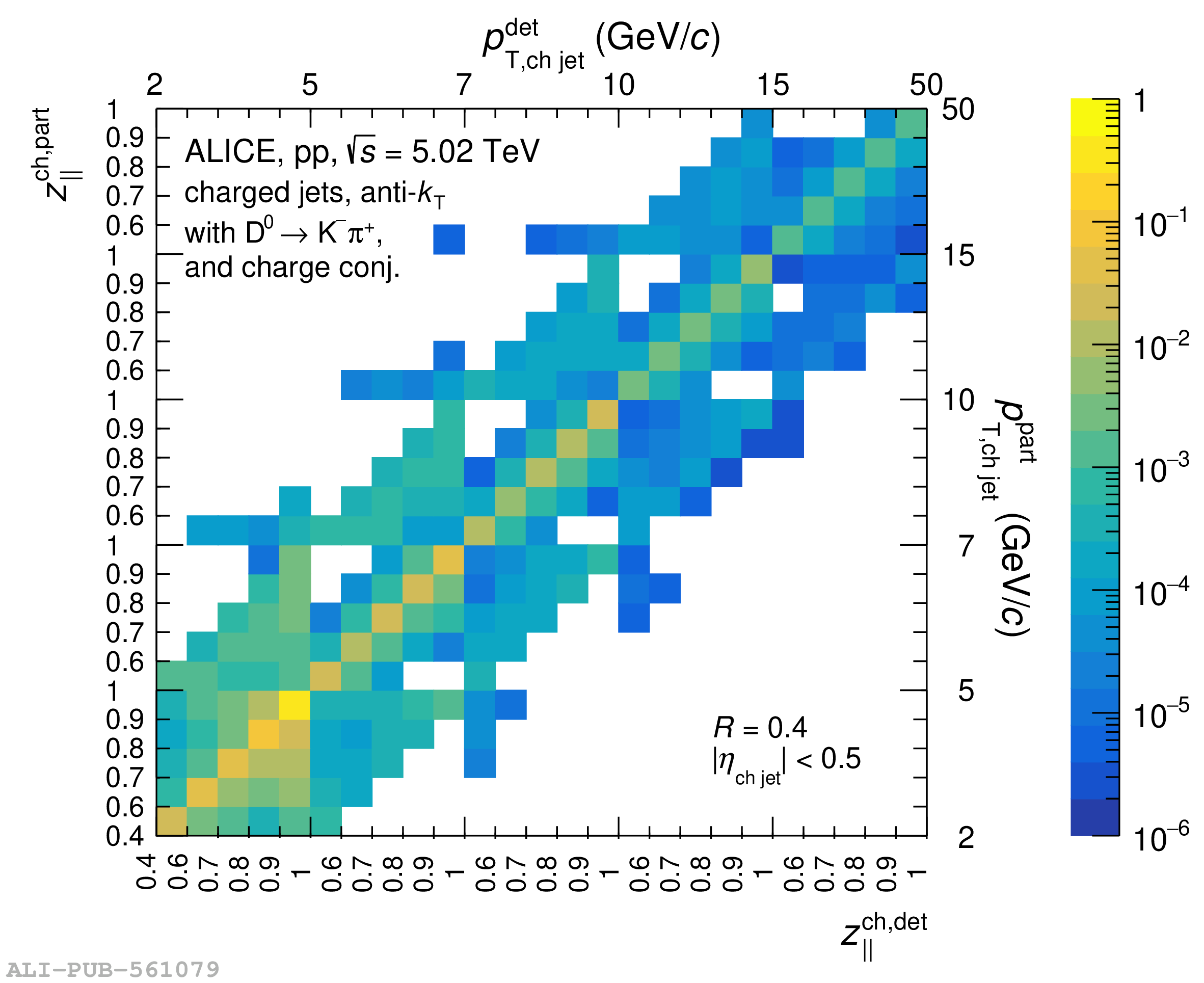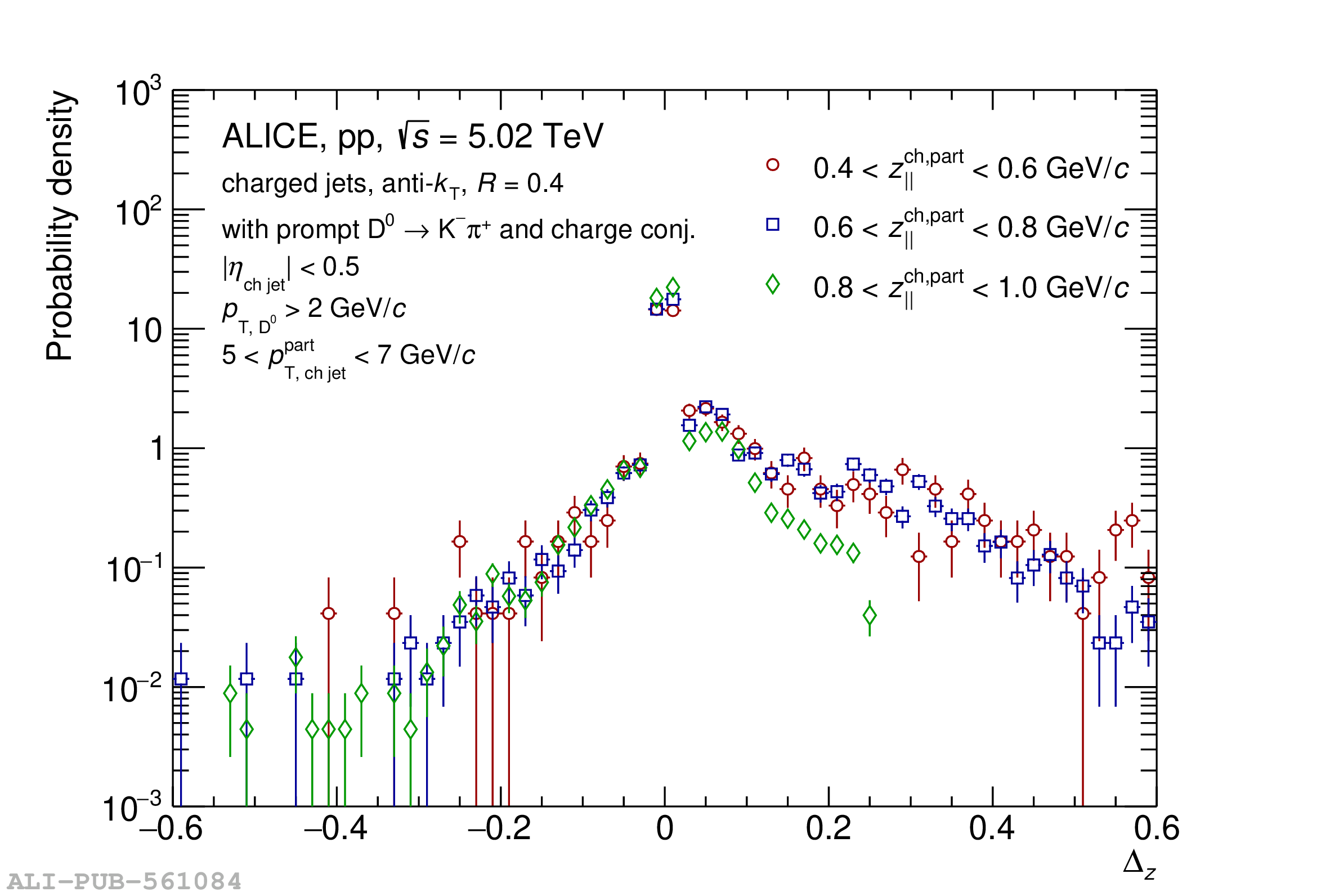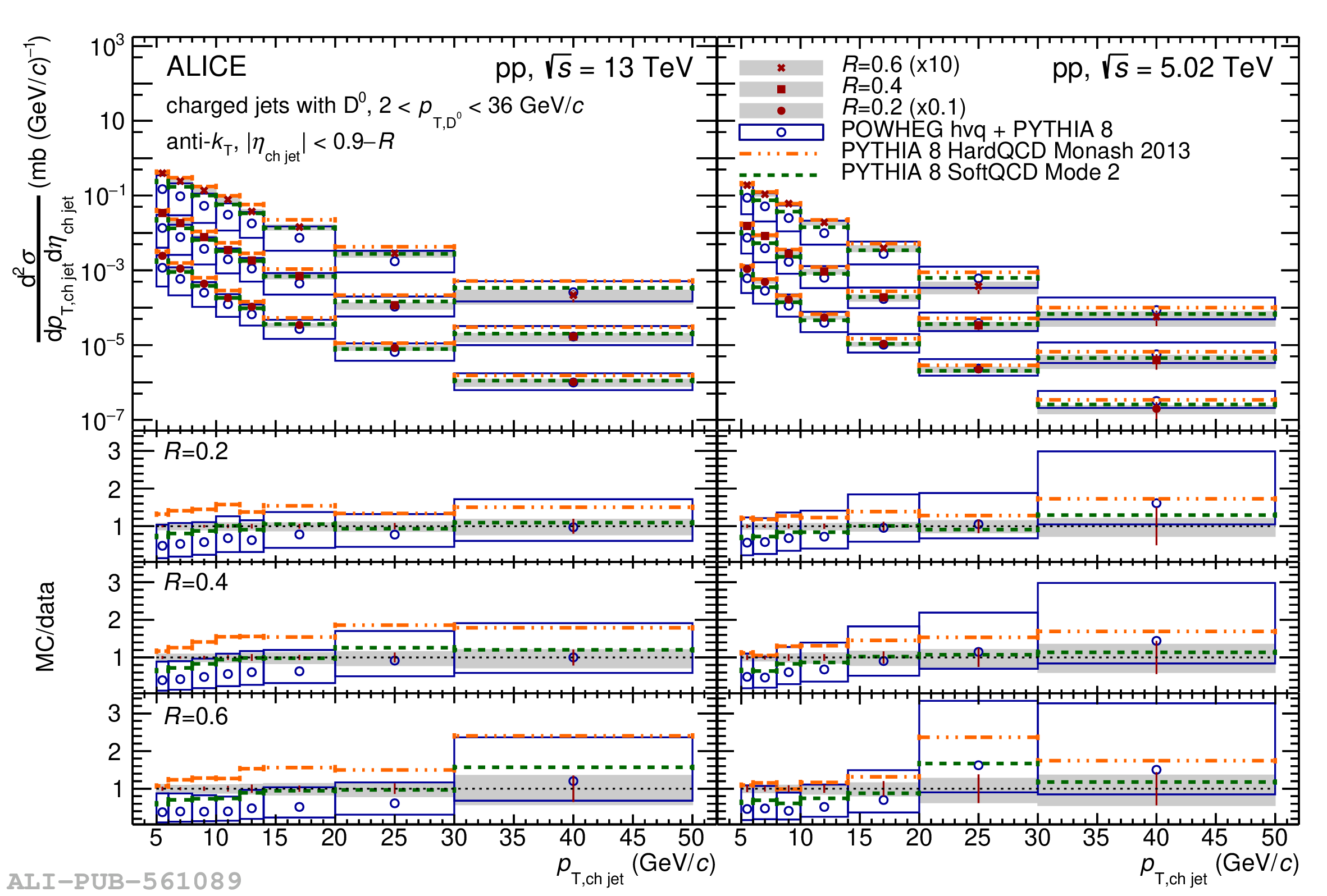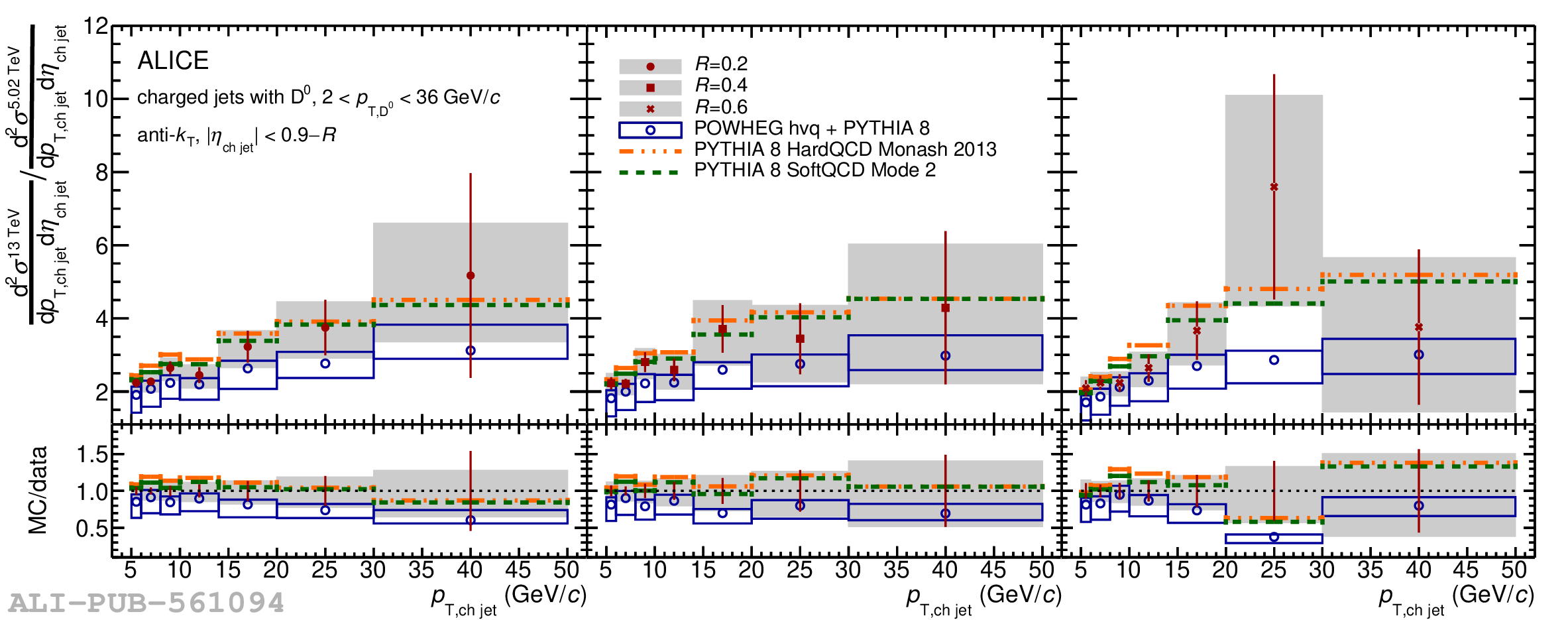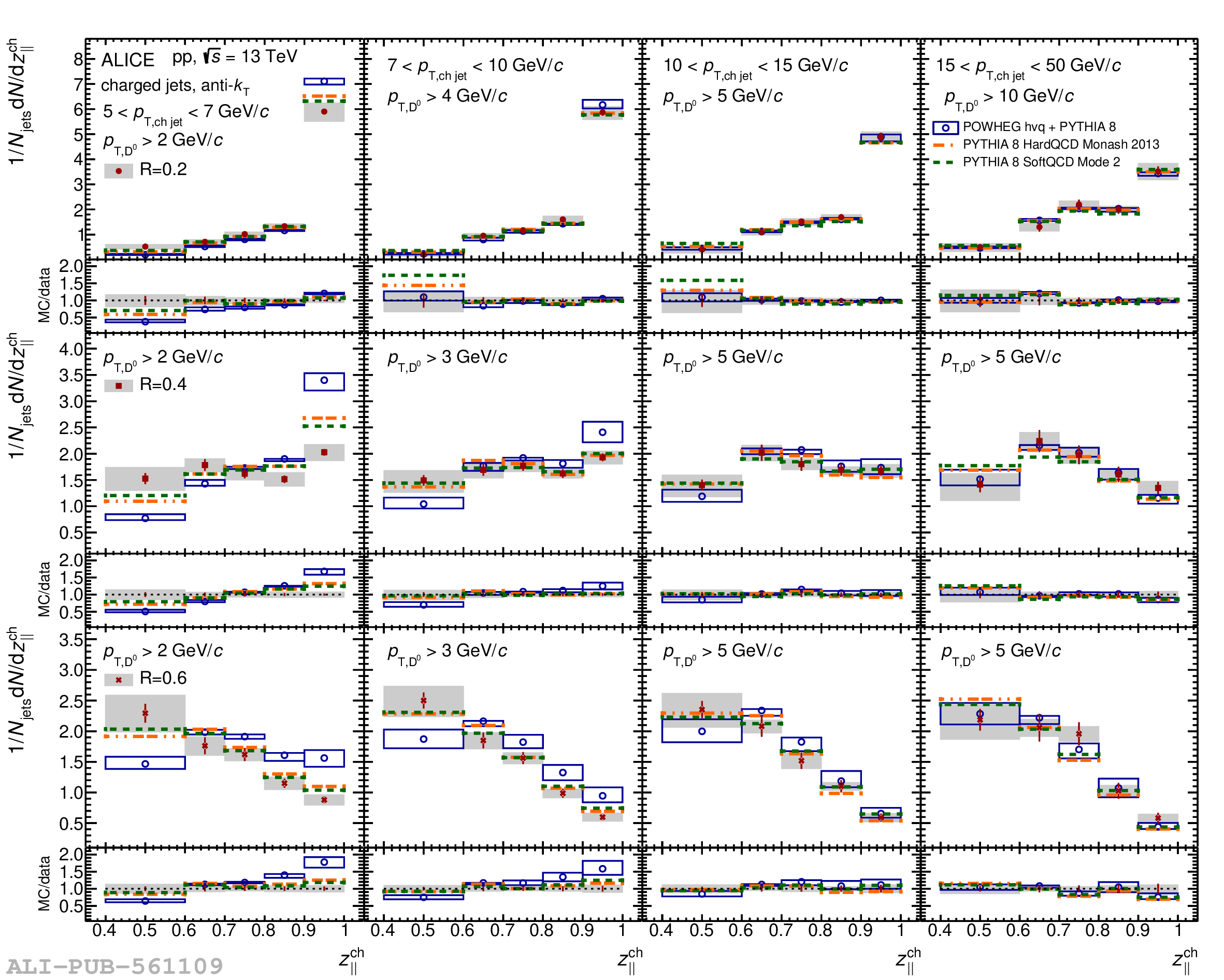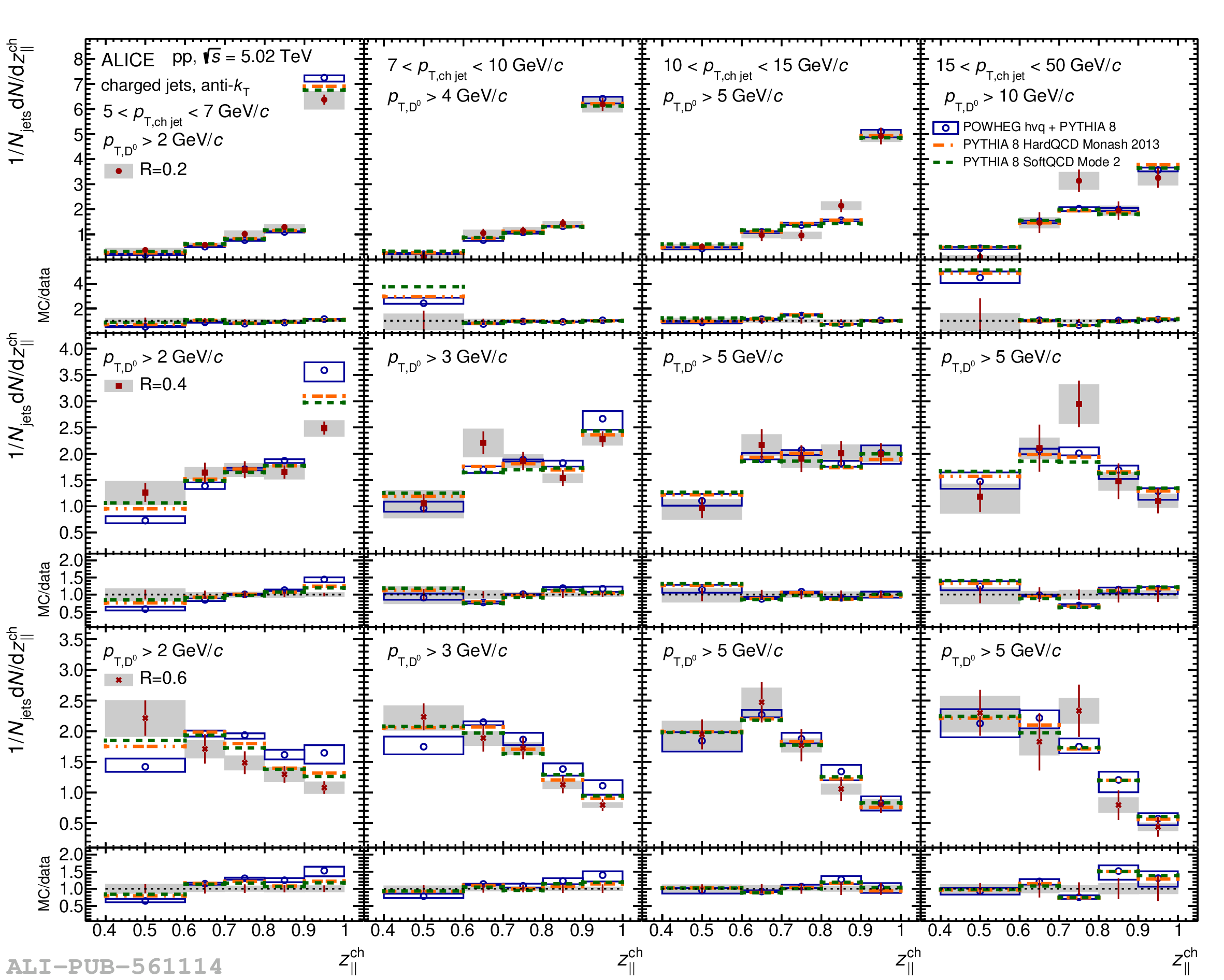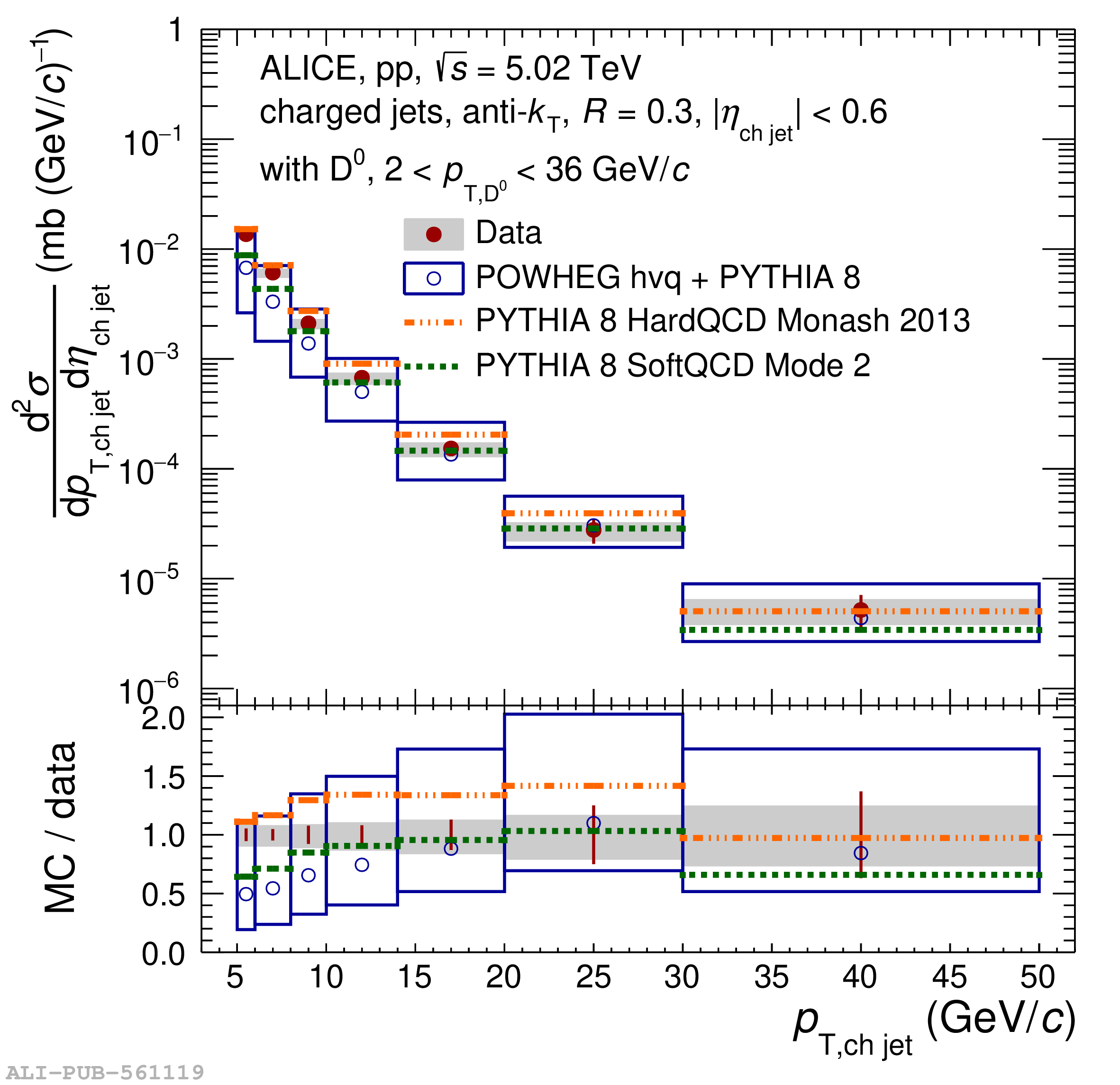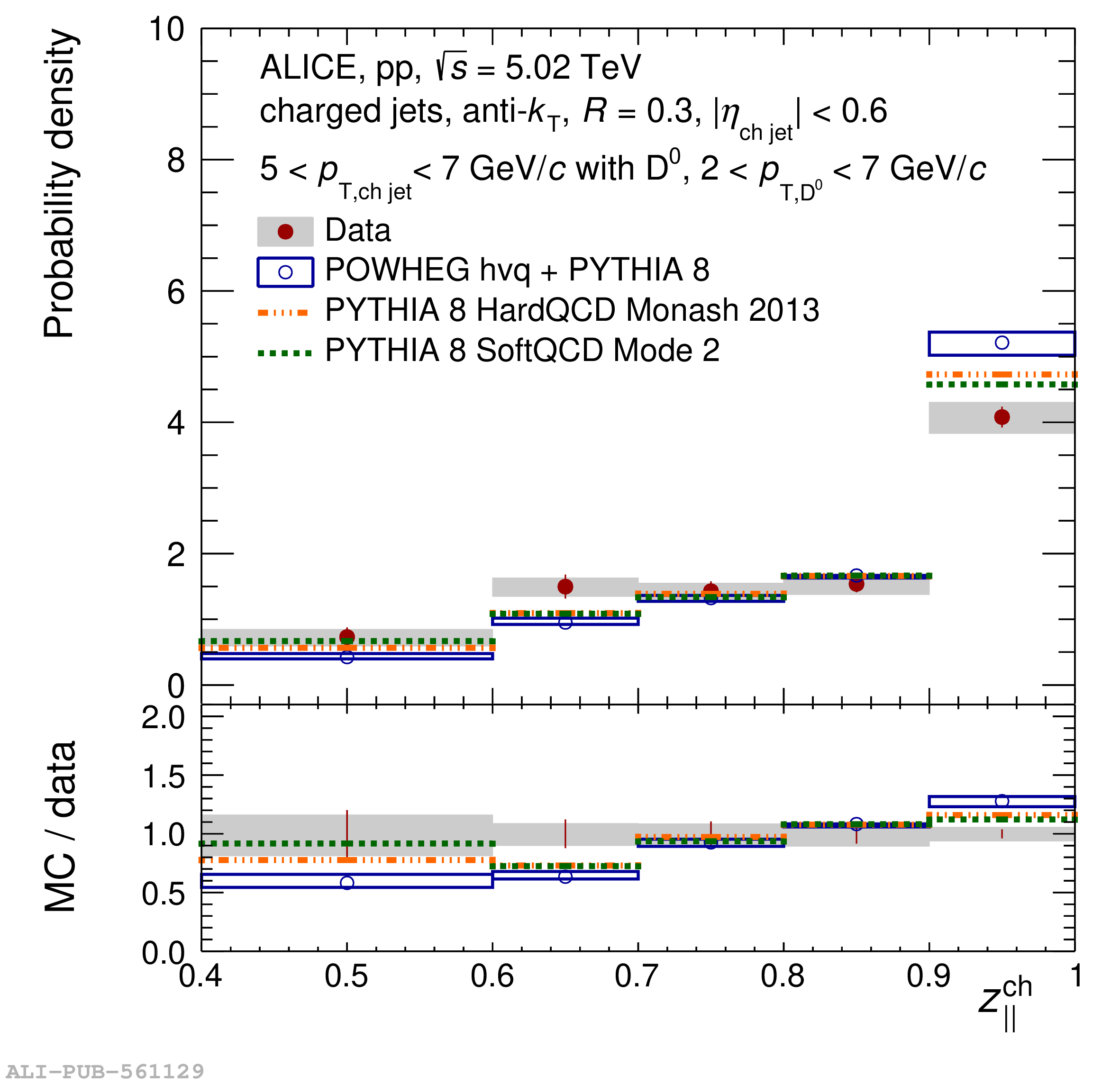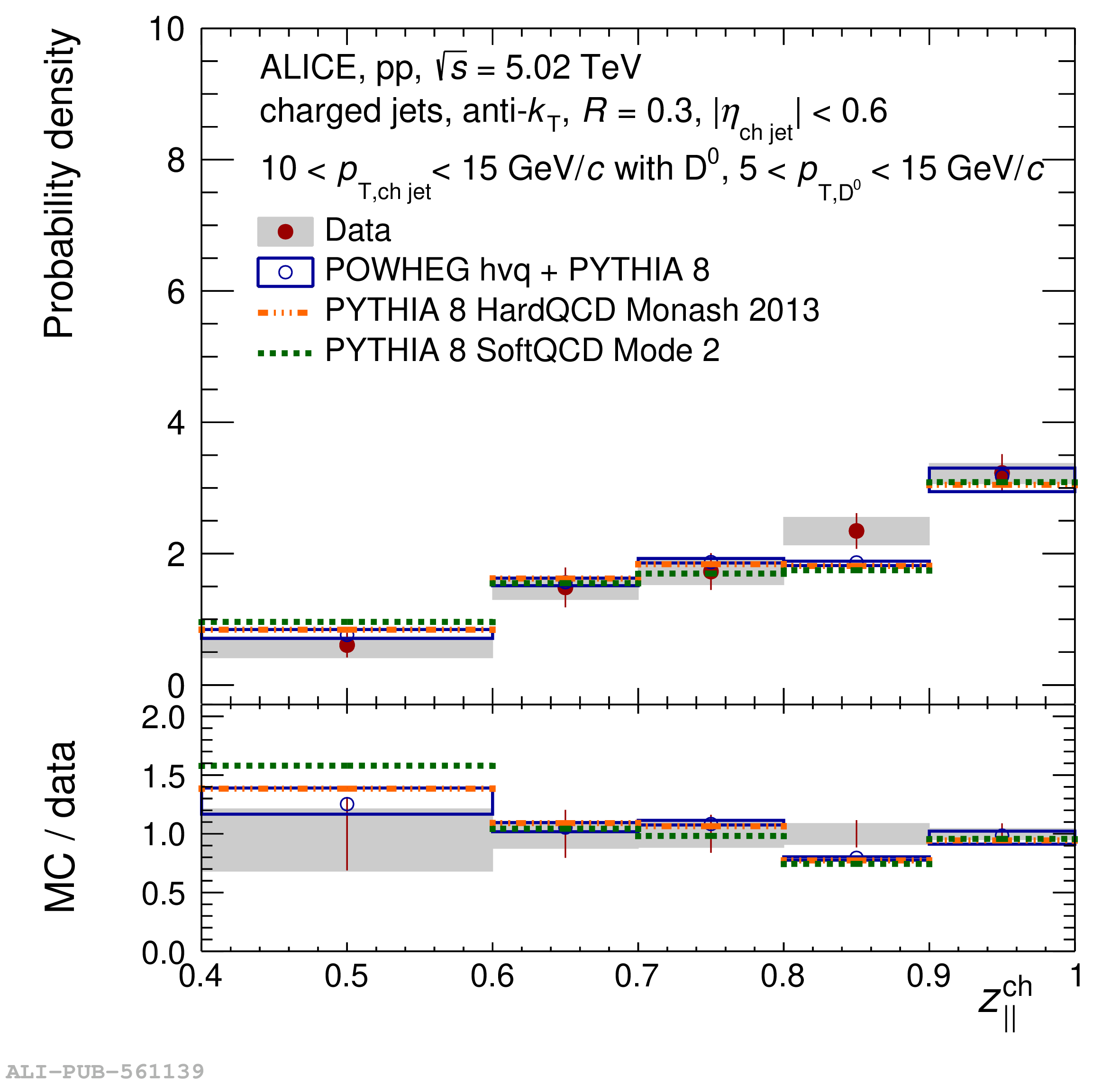The measurement of the production of charm jets, identified by the presence of a ${\rm D^0}$ meson in the jet constituents, is presented in proton-proton collisions at centre-of-mass energies of $\sqrt{s}$ = 5.02 and 13 TeV with the ALICE detector at the CERN LHC. The ${\rm D^0}$ mesons were reconstructed from their hadronic decay ${\rm D^0} \rightarrow {\rm K^-}\pi^+$ and the respective charge conjugate. Jets were reconstructed from ${\rm D^0}$-meson candidates and charged particles using the anti-$k_{\rm T}$ algorithm, in the jet transverse momentum range $5<~p_{\rm T;chjet}<~50$ GeV/$c$, pseudorapidity $|\eta_{\rm jet}| <~0.9-R$, and with the jet resolution parameters $R$ = 0.2, 0.4, 0.6. The distribution of the jet momentum fraction carried by a ${\rm D^0}$ meson along the jet axis ($z^{\rm ch}_{||}$) was measured in the range $0.4 <~ z^{\rm ch}_{||} <~ 1.0$ in four ranges of the jet transverse momentum. Comparisons of results for different collision energies and jet resolution parameters are also presented. The measurements are compared to predictions from Monte Carlo event generators based on leading-order and next-to-leading-order perturbative quantum chromodynamics calculations. A generally good description of the main features of the data is obtained in spite of a few discrepancies at low $p_{\rm T;chjet}$. Measurements were also done for $R = 0.3$ at $\sqrt{s}$ = 5.02 TeV and are shown along with their comparisons to theoretical predictions in an appendix to this paper.
JHEP 06 (2023) 133
HEP Data
e-Print: arXiv:2204.10167 | PDF | inSPIRE
CERN-EP-2022-070
Figure group






